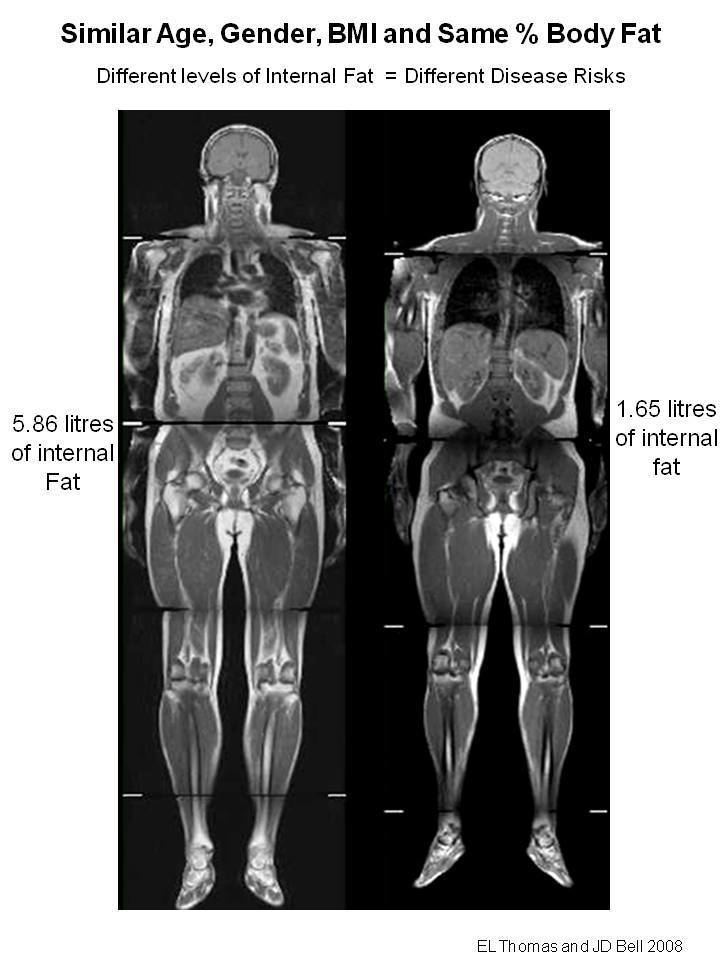 | ||
TOFI, thin-outside-fat-inside is used to describe lean individuals with a disproportionate amount of fat (adipose tissue) stored within their abdomen. The figure to illustrate this shows two men, both aged 35 years, with a BMI of 25 kg/m2. Despite their similar size, the TOFI had 5.86 litres of internal fat, whilst the healthy control had only 1.65 litres.
Contents
Subjects defined as TOFI with body mass index (BMI) <25 kg/m2 have increased levels of many of the risk factors associated with the metabolic syndrome. This phenotype is a further refinement of the “metabolically-obese but normal-weight” (MONW).
Subjects defined as TOFI have been described as being at higher risk of developing insulin resistance and type II diabetes due to the fact that they have reduced physical activity/VO2max, reduced insulin sensitivity and higher abdominal adiposity and a more atherogenic lipid profile. Another important characteristic observed in this cohort of subjects is elevated levels of liver fat.
Measurement
To classify an individual as TOFI, it is essential to measure their internal fat content. The only way that this is possible is by using magnetic resonance Imaging (MRI) or CT scanning. The parameters of the MRI scanner are manipulated to show fat as bright (white) and lean tissue as dark.
Indirect methods such as waist circumference are not suitable as individuals with an identical waist circumference can have vastly different levels of internal fat.
The figure clearly shows that despite having an identical waist circumference (in this example all men had a waist of 84 cm), there is considerable variation in the amount of visceral fat (volumes shown on the image in litres) present.
Epidemiology
This is difficult to establish in the general population since the necessary imaging examinations are time consuming and expensive, however in a recent research study it was estimated that 14% of the men and 12% of the women scanned with a BMI 20–25 kg/m2 were classified as TOFI[1].
Related phenotypes
No less important than the TOFI are the metabolic opposites. The subjects have variously been described as being FOTI (fat outside, thin inside), the metabolically healthy obese (MHO) or even the fit fat. These subjects have little internal fat relative to their size and an example of this can be seen in the figure where MRI images taken at the level of the umbilicus are shown from a fat-fit (FOTI) and a fat-unfit (control) subject.
Society and culture
Since the first scientific observations that some lean subjects could have as much, if not more, body fat internally than overweight or obese individuals, there has been considerable media and press interest in this area of research. The first article in the popular press appeared in 2006 in The Guardian, followed by many other newspapers and television documentaries.
